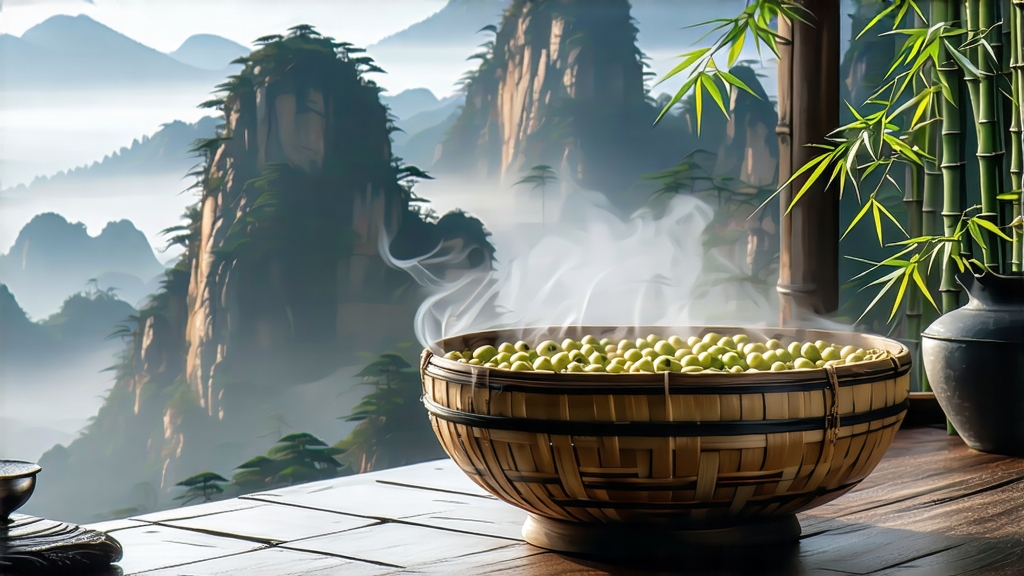
Tucked high in the mist-veiled Dabie Mountains of western Anhui province, Huoshan Huangya has quietly captivated Chinese emperors, poets, and tea sages for more than seven centuries. Unlike the better-known greens of Longjing or the rock oolongs of Wuyi, this “yellow bud” tea remains a semi-hidden gem, its subtle golden liquor and orchid-like sweetness shared mainly among court circles until modern times. To understand Huoshan Huangya is to witness the slow alchemy of “menhuang”—the sealed-yellowing process that turns fresh leaf into amber-stemmed treasure without ever allowing it to oxidise as a black or oolong tea would. The result is a cup that hovers between the grassy clarity of green tea and the mellow roundness of a lightly aged white, delivering a flavour that seems to glow on the palate like late-afternoon sunlight.
Historical records first mention “Huozhou yellow sprout” in 1307, when the Yuan-court censor Ma Duanlin listed it among the 42 tribute teas sent to the capital. During the Ming dynasty the tea disappeared from written tribute rolls, probably because the imperial court shifted its favour to newly fashionable Fujian oolongs. Yet in the remote Huoshan valleys the tea never stopped being made; mountain monasteries kept the craft alive, exchanging tiny bamboo-tonged gifts with travelling scholars. The turning point came in 1972, when Premier Zhou Enlai served Huoshan Huangya to visiting Japanese dignitaries, prompting the county government to revive large-scale production. Today the tea enjoys Protected Geographic Indication status within China, and each spring’s harvest is still auctioned in Beijing under heavy security, but only about 180 tonnes reach the global market—less than two hours of Darjeeling’s annual output.
The tea belongs botanically to a local cultivar group called “Huoshan early-sprouting large leaf,” a naturally occurring hybrid between the small-leaf China bush and the larger Assamica strains that crept north along the Yangtze gorges. Its buds stand out even in February: thick, jade-white needles densely covered in down, yielding unusually high amino-acid readings that later translate into brothy sweetness. Growers restrict plucking to the first fourteen days after Qingming, when only the unopened bud or the bud-plus-one-leaf stage is accepted. A skilled picker can finish just 600 g of fresh material in a full dawn-to-dusk shift, explaining why a kilo of finished tea needs roughly 42 000 individual buds.
Processing begins within minutes of plucking. The leaves are spread on bamboo trays and withered for two hours in weak mountain sunlight, long enough to evaporate surface moisture but short enough to preserve the bright green colour. Next comes the kill-green stage, performed on shallow woks heated to 160 °C. The tea master tosses the buds in rhythmic arcs, using only the heel of his palm to avoid breaking the down. After three minutes the leaf temperature is rapidly dropped to 38 °C, at which point the unique “menhuang” phase begins. The warm buds are piled 8 cm deep inside square cedar boxes lined with wet cotton; the lids are sealed and the boxes slid into a 30 °C, 85 % humidity chamber for 50–70 minutes. During this enclosed sweat the leaf chlorophyll gently degrades, tannins polymerise, and a faint maillard aroma reminiscent of fresh corn emerges. Because the pile is never turned, yellowing proceeds unevenly, giving the finished tea its characteristic tri-colour look: olive-green bud tips, canary-yellow stems, and the occasional amber spot where two leaves pressed together. A final low-temperature bake at 55 °C for 90 minutes sets the flavour, after which the tea rests in unglazed clay jars for at least ten days before sale, allowing residual moisture to equalise and the signature “chestnut-orchild” note to bloom.
Western drinkers often confuse yellow tea with lightly oxidised oolong because both can display a yellowish dry leaf. The key difference lies in the absence of intentional bruising: oolong depends on mechanical damage to initiate oxidation, whereas yellow tea is never rattled in bamboo drums or shaken in cloth sacks. The only “oxidation” is enzymatic, occurring in the anaerobic warmth of the sealed box, and it stops the moment the leaf is baked. Chemically this produces a higher ratio of soluble sugars to catechins